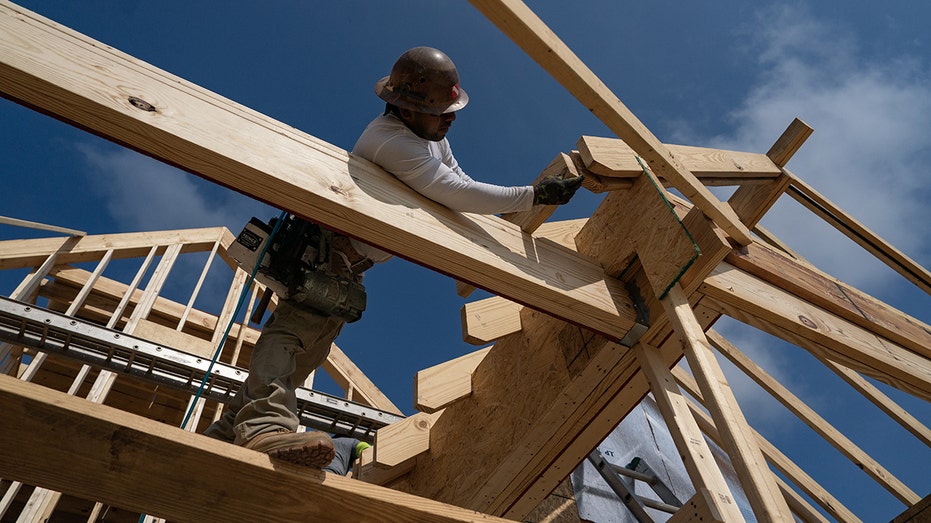ResiClub co-founder and editor-in-chief Lance Lambert discusses the U.S. housing affordability crisis on ‘Making Money.’
Homeownership has slipped out of reach for millions of Americans thanks to the astronomical rise in mortgage rates and an ongoing inventory shortage.
Now, there is another obstacle to buying a home: Investors and hedge funds are snatching up properties at the fastest pace in nearly two years, according to new findings published by Redfin.
Real-estate investors bought about 44,000 homes in the first quarter of 2024, up half a percent from the previous year – the first increase since 2022. The gain was primarily driven by an uptick in purchases of single-family homes.
Although investors are scooping up fewer homes than they did before the pandemic began, they’re still purchasing a “fairly high” share of the homes. In fact, in the first three months of the year, investors bought almost 19% of homes that sold, the highest percentage in nearly two years. That means investors bought just about one in five homes for sale in the three-month period from January to March.
AMERICANS EXPECT HIGH INFLATION TO STICK AROUND IN LATEST NY FED SURVEY
Homes in the Issaquah Highlands area of Issaquah, Washington, on April 16, 2024. (Photographer: David Ryder/Bloomberg via Getty Images / Getty Images)
“With home prices and rents back on the rise and the initial shock of elevated mortgage rates in the rearview mirror, investors are easing their foot off the brake pedal,” the report said.
One reason that investors are coming off the sideline is because they are earning more money than they were just one year ago. As of March, the typical home sold by an investor garnered a 55% return, or about $175,000 in profit. That’s up from about a 46% return the previous year and $147,000 in profit. Investors are also more immune to high mortgage rates than the typical individual buyer, because they tend to pay in all cash.
“When home prices got crazy high during the pandemic, investors sold out,” said Connie Durnal, a Dallas Redfin Premier agent. “But several months ago, they started to ramp back up.”
The analysis found that investors are buying more expensive homes than before the pandemic, with purchases of high-priced homes surging 10.5% in the first quarter when compared with the previous year. The typical home bought by investors in the first quarter cost about $464,560, a more than 9% increase from a year earlier. In total, investors bought up about $31.3 billion worth of real estate in the first quarter.
WHY CAN’T YOU FIND A HOME FOR SALE?

A house is for sale in Arlington, Virginia, on July 13, 2023. ((Photo by SAUL LOEB/AFP via Getty Images) / Getty Images)
However, real estate investors are also snatching up a record share of the most affordable homes in the country, according to the analysis. Low-priced homes represented 47.5% of investor purchases in the first quarter, while high-priced homes accounted for 28.5%.
“While high-priced homes made up the biggest increase in investor purchases in the first quarter, low-priced homes were still the preferred property type,” the report said.
Investors are drawn to lower-priced homes for many of the same reasons that individual buyers are: They cost less, which is appealing when both housing prices and borrowing costs remain elevated. However, this means that individuals are often competing with cash-rich investors to buy the same homes.
“Any home that is entry-level is immediately pounced on,” said Brian Connelly, a Redfin Premier agent in Boston. “There’s a mix of first-time homebuyers, investors and second-home buyers all fighting for homes.”
CREDIT CARD DELINQUENCIES ARE SURGING
Many Americans are already struggling to become homeowners amid the spike in housing prices.
There are a number of driving forces behind the spike in prices.

Workers build homes in Lillington, North Carolina, on June 15, 2023. (Photographer: Allison Joyce/Bloomberg via Getty Images / Getty Images)
Years of underbuilding fueled a shortage of homes in the country, a problem that was later exacerbated by the rapid rise in mortgage rates and expensive construction materials.
Available home supply remains down a stunning 34.3% from the typical amount before the COVID-19 pandemic began in early 2020, according to a separate report published by Realtor.com.
Higher mortgage rates over the past three years have also created a “golden handcuff” effect in the housing market. Sellers who locked in a record-low mortgage rate of 3% or less during the pandemic began have been reluctant to sell, limiting supply further and leaving few options for eager would-be buyers.
Newsfromrss.com
While an uptick in the number of home listings in certain markets is a welcome sign that suggests “early signs of normalization,” Fitch said “the pace is being tempered by persistently high mortgage rates and the escalation of home prices.”
Economists predict that mortgage rates will remain elevated in 2024 and that they will only begin to fall once the Federal Reserve starts cutting rates. Even then, rates are unlikely to return to the lows seen during the pandemic. On top of that, investors are growing skeptical about the odds of a Fed rate hike this year given the string of hotter-than-expected inflation reports at the beginning of the year.
Mortgage buyer Freddie Mac said Thursday that the average rate on a 30-year loan last week fell to 7.02%. While that is down from a peak of 7.79% in the fall of 2023, it remains sharply higher than the pandemic-era lows of just 3%.


